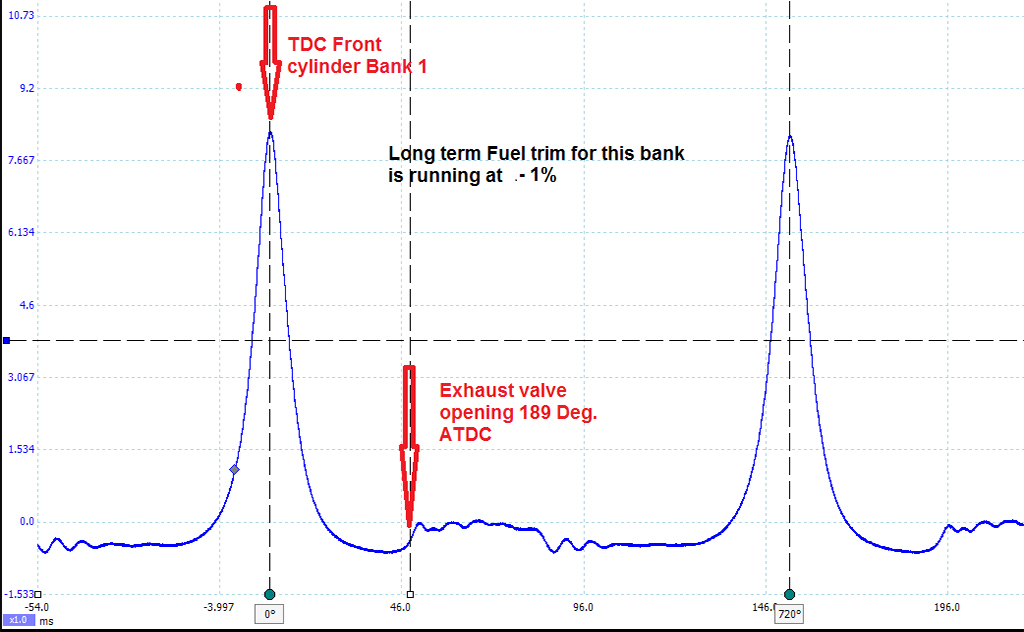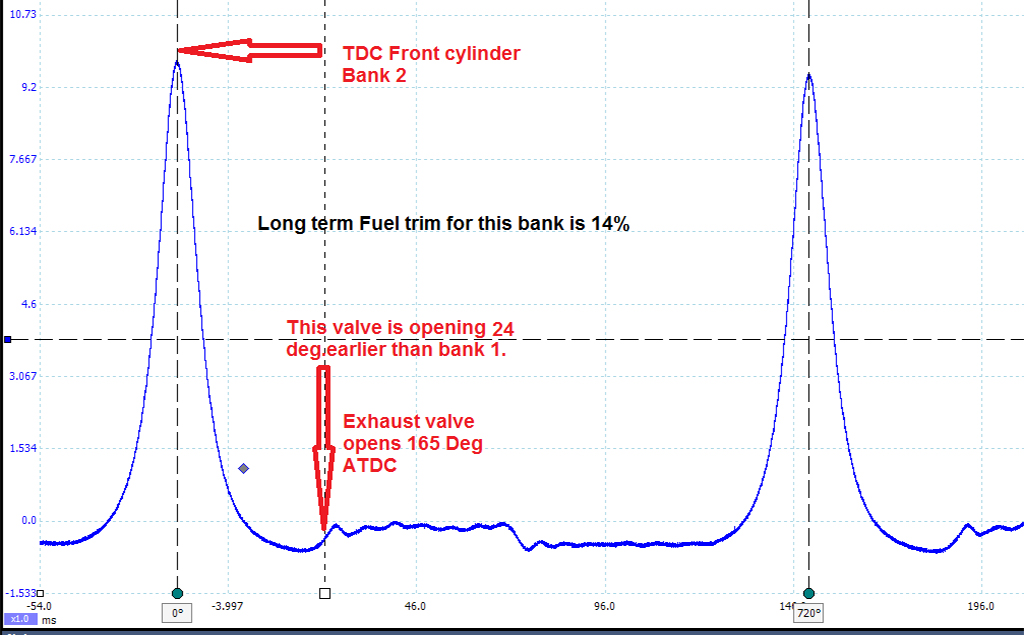A 1997 Jaguar XJ8 4.0 came into a subscriber’s workshop, with the customer asking for the injectors to be cleaned. Previous garages had tried to identify the cause of poor idle quality and none had been successful.
The first step was to code read for any faults stored, only 1 was retrieved: P0174 System Too Lean (Bank 2). The long term fuel trim for Bank 2 was running at 14%, but only -1% for Bank 1. On investigation, the injector on time for Bank 2 was 1 ms longer than for Bank 1.

The long term Fuel trim for Bank 1 was -1%, with the exhaust valve opening
at 189 degrees ATDC.
As fuel pressure was from a common rail, a fuel pressure fault was ruled out. A smoke test proved there were no manifold air leaks. Compression pressures proved good for all cylinders, and the secondary ignition showed no problem.
We then moved on to see if there was a possible mechanical fault with that bank, so an in cylinder pressure test with the Pico pressure transducer was performed with interesting results. Bank 2 exhaust valve was opening 24 degrees earlier than Bank 1. As this cam was not equipped with variable valve timing, a problem with the chain was suspected.

The long term Fuel trim for Bank 2 was 14%, with the exhaust valve opening much earlier
at 165 degrees ATDC.
After stripping the engine, Bank 2 timing was found to be out. The timing chain was then replaced. Problem solved.
Moral of this story: Long term fuel trim is a very useful diagnostic tool to pinpoint faults. It is said that a long term fuel trim 10% positive or negative indicates a running problem. But 10% is rather high and we have found that figures higher than 5% are worth investigation.
For your risk-free trial on the eXponentia Technical Helpline, ring us on +353-(0)1-905-9500.



